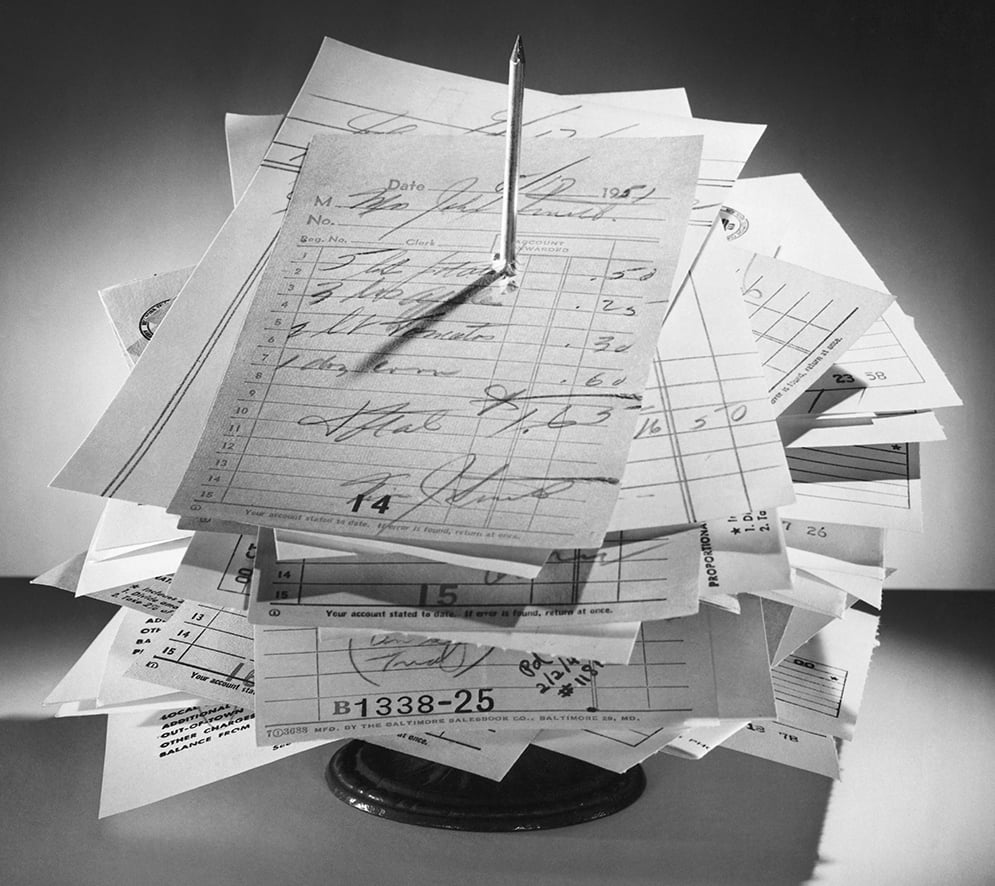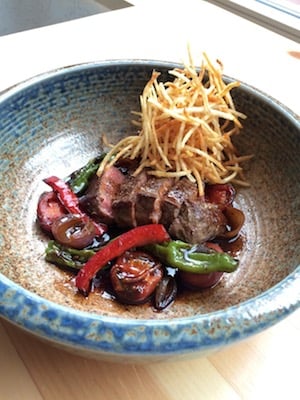A lot happened in my 40 years editing Washingtonian, and some of the most lasting memories were the lunches.
In 1969, my first year in the job, another magazine’s editor took me to Sans Souci, near the White House and at the time DC’s top restaurant. The check was $13.50 for two. I had never eaten at such high prices.
In the early ’70s, Earle Williams, head of BDM, a Northern Virginia technology firm, invited me to Fairfax County. The magazine rarely wrote about Virginia, and he wanted us to know about the changes there. We ate in a Holiday Inn, with Earle apologizing: “There’s still no place to have lunch out here.”
Washingtonian’s offices were on Connecticut Avenue near M, and Paul Young’s was where establishment types ate, typically starting with a Manhattan or martini. I remember a man ordering a steak and saying, “Hold the potatoes.” That was virtuous dining then.
In 1979, Laughlin Phillips sold the magazine to Philip Merrill, owner of the Annapolis Capital. I didn’t know Phil well and wanted to impress him. I was having lunch at Duke Zeibert’s and saw lawyer Bob Strauss working the room. Strauss was known for insulting his friends and being helpful to journalists, so I told him I’d soon be having lunch with our new owner—would he come by and insult me? Phil and I showed up a few days later. Strauss walked over and said, “If you want to improve the magazine, you should get rid of the guy editing it.” I’m happy to report Phil laughed.
By this time, Duke’s had taken over from Sans Souci as the place to people-watch. Redskins owner Jack Kent Cooke had a table, and lots of lawyers, businessmen, and pols ate there. The back room was Siberia, and Duke decided who sat where. One day, Kelly McGillis came in—she’d starred in Top Gun with Tom Cruise and was in a play at Shakespeare Theatre. After Duke put her in Siberia, I stopped him and told him about Top Gun. He reseated her in the front. No restaurateur today would need me to point out a Hollywood celebrity.
In the ’80s, the dining scene began to change as more ethnic restaurants opened—Vietnamese, Thai, Ethiopian. Wyche Fowler was an engaging senator from Georgia, and over lunch he explained that as revolutions and turmoil hit Asian and African nations, former government officials immigrated and opened restaurants here. Fowler, who loved good food, joked that his foreign policy was based on a vision of Soviet tanks rolling into Paris and all the chefs fleeing to Washington.
As the suburbs grew, we looked at dining coverage. Our critic, Robert Shoffner, stayed mostly in the District. In the early ’90s, when I told Robert we were adding two reviewers for Maryland and Virginia, he was stunned—all the good restaurants were in DC, he said.
In 1997, to see if Washingtonian.com was helpful, I had lunch with six people who regularly visited it. They told me they liked the restaurant coverage best. How often did they go on the site? They visited it while at work. One said, “The last thing we want to do when we get home is look at a computer.” These days, it might be the first.
Fourteen years ago, I had breakfast at the Mayflower with Brian Lamb, who ran C-SPAN. We met at 8 and left the hotel around 9:15. At the Mayflower, we’d talked with a half dozen journalists and political types. When I got back to work, the staff was huddled in Phil Merrill’s office silently watching TV. It was September 11, 2001.
I don’t remember anyone in the Mayflower dining room having a cell phone. The morning of 9/11 and the dawn of the digital age changed everything.
Writer at large Jack Limpert (jlimpert@washingtonian.com) was editor of Washingtonian from 1969 to 2009. His blog, About Editing and Writing, is at jacklimpert.com.
This article appears in our October 2015 issue of Washingtonian.


















